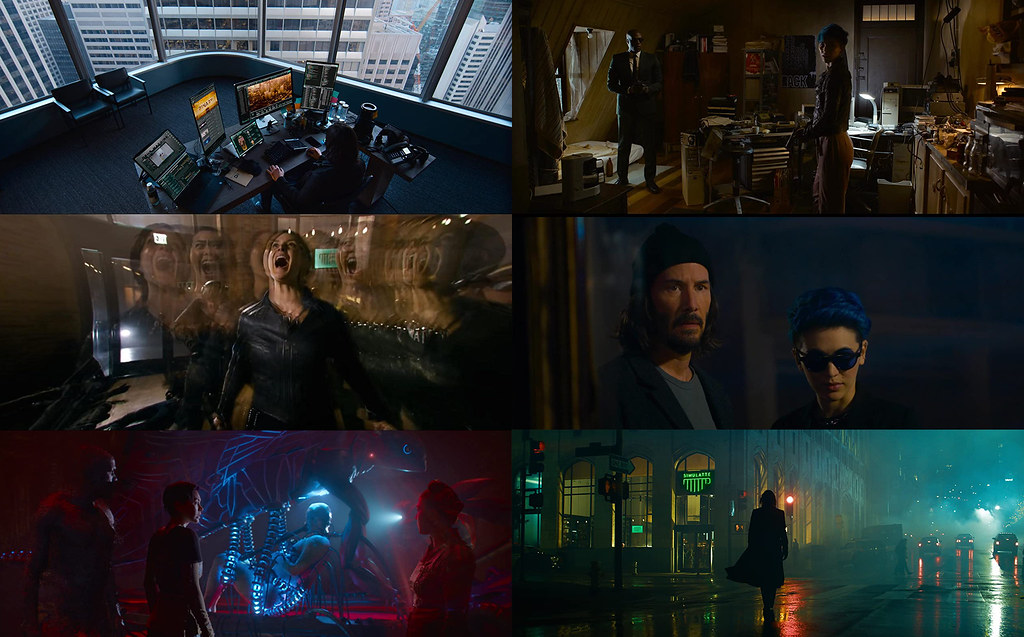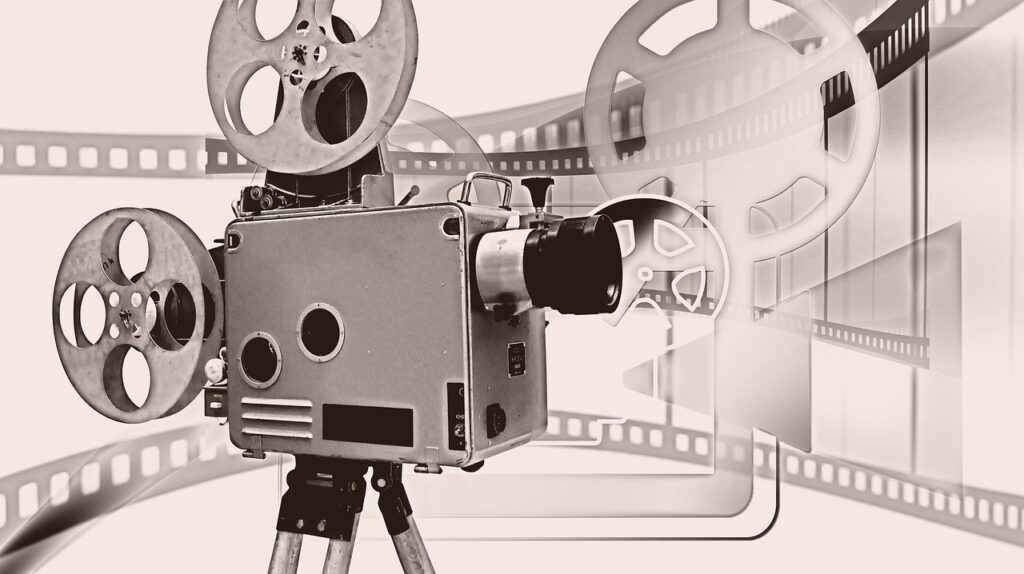The cinematic universe has long been known for pushing boundaries and challenging viewers’ perceptions in ways few other art forms can. Often, it’s the most confusing movies that leave a lasting impression, not just for their memorable moments, but by truly entangling intricate plotlines with enigmatic characters and themes. These are the films that don’t just ask for attention; they demand the utmost focus from audiences as they navigate through a maze of bewildering twists and turns, ultimately rewarding those who manage to decipher their complexities and embrace the unknown.
To unearth the secrets hidden within each of these cinematic puzzles, one must pay close attention to how these stories intertwine their elements while simultaneously defying conventional norms. Each of these confusing movies employs an array of narrative techniques designed specifically to keep viewers guessing throughout the unfolding story. The incorporation of unconventional storytelling, ambiguous characters, and complex ideologies creates a truly unique experience, one that frequently demands multiple viewings or an in-depth analysis to fully grasp each film’s profound essence. It’s a crucial distinction, however, to understand that while ‘complicated’ typically refers to something difficult to grasp due to its intricacy, ‘convoluted’ suggests something twisted or tangled in a way that inherently makes it confusing or difficult to follow.
These days, discussions around complex movies always tend to circle back to the same-old puzzle-box mysteries — films with labyrinthine plotting, intricate rules, or shocking twists that will catch even the most eagle-eyed of viewers off-guard. And honestly, there’s nothing wrong with a solid brainteaser that demands your undivided attention and calls for a second look. However, we wanted to cast a wider net and dive a little deeper to highlight not just complex movies in a purely narrative sense, but also those that leave the viewer to their own devices to figure things out, films that have sparked heated debates over their meanings and themes. The following selection has befuddled audiences and pundits alike for years, practically begging for multiple rewatches in order to be fully unpacked. Without further ado, let’s dive in.
1. **Last Year at Marienbad (1961)**
Alan Resnais’ “Last Year at Marienbad” truly pushes the boundaries of cinematic storytelling, presenting itself as an experimental French movie that ebbs and flows with the disorienting logic of a hazy dream. Its intentionally opaque, knotty hall-of-mirrors narrative layers timelines one on top of another, much like Russian nesting dolls, daring the viewer to unravel its many secrets. We start with a man, simply known as X (Giorgio Albertazzi), who approaches a woman, A (Delphine Seyrig), and insists they have already met.
He claims they shared a brief encounter, blossoming into a passionate romantic affair a year ago, specifically in the very same luxury country hotel where they’ve now seemingly bumped into each other. To further muddy the waters of this intricate narrative, A inexplicably begins to accept his words as potentially true as the story progresses, despite initially appearing to have no recollection of the man whatsoever. This immediate ambiguity sets the stage for a film that thrives on uncertainty, leaving its audience in a constant state of intellectual pursuit.
The film actively pokes at the audience with open-ended questions, forcing engagement on a profoundly intellectual level. We are left to ponder crucial mysteries: Is X subtly gaslighting A into believing a shared past that never truly existed? Or is A, perhaps, unconsciously attempting to compartmentalize a painful — and potentially traumatic — memory, pushing it deep into her subconscious? The film even ventures into more existential territory, inviting us to question if they are both already dead, or if X’s husband committed an act of jealous violence against A. Each of these possibilities is presented without definitive answers, becoming part of the film’s enduring mystique, and even a blink-it-and-you-missed-it cameo by Alfred Hitchcock via a full-size cardboard cut-out only adds to its enigmatic charm.
Ultimately, the absence of ‘right’ or ‘wrong’ answers is exactly what keeps dedicated cinephiles coming back to “Last Year at Marienbad” for more, making it a foundational text for anyone seeking to understand the limits of conventional narrative. It’s a film that demands surrender to its dreamlike flow, where meaning is not given but actively constructed by each individual viewer. This profound open-endedness ensures its place as a quintessential example of a movie that doesn’t just confuse, but actively invites deep, personal interpretation.
2. **Primer (2004)**
One of the chief pleasures of time-travel movies lies in their ability to put your brain through the wringer with a hard sci-fi framework, in which elliptical timelines converge in delightfully unpredictable ways. However, most well-known entries in the genre often purposefully dumb-down their premises or spoon-feed the audience, ensuring that no one gets lost in the shuffle. This approach, while commercially successful for films like “Back to the Future” or “Edge of Tomorrow,” often sacrifices genuine intellectual challenge for broader accessibility.
In stark contrast, Shane Carruth’s “Primer” stands as a lo-fi cult item that many argue deserves to be seen as the apex of the entire time-travel sub-genre. The $7,000 indie sensation certainly earns a lot of points for taking a more grounded and intensely cerebral approach, one that absolutely forces you to think hard about the metaphysical rules of its premise. This isn’t a film that holds your hand; it throws you into the deep end, demanding that you actively engage with every twist and turn of its meticulously crafted logic. It purveys all the moral pickles and existential implications about bouncing backwards and forwards through time, exploring the true weight of such power.
Prepare to find your resolve and scientific jargon thoroughly tested while trying to keep up with the central framework of the film. The plot follows a pair of bootstrapping software engineers who stumble upon a cutting-edge tech device they put together in their basement. As they explore its lucrative possibilities, they begin slyly manipulating the stock market to earn a quick buck. The film’s dialogue is dense, its explanations delivered quickly and without condescension, mirroring the rapid-fire intelligence of its protagonists. This dedication to realism in its scientific portrayal, even within a fantastical premise, makes it a truly unique and challenging viewing experience, and for another doozy that will equally test your grey matter, consider Carruth’s 2013 follow-up, “Upstream Color.”
“Primer” doesn’t just present a complex plot; it creates a fully realized, self-consistent world of time travel that invites — no, demands — multiple viewings and in-depth analysis to truly appreciate its ingenious design. It’s a film that embodies the spirit of intellectual curiosity, demonstrating that cinematic complexity, when executed with precision and daring, can be immensely rewarding for those willing to do the work. The sheer density of its narrative, combined with its independent spirit, solidifies its position as a film that confused many, yet captivated a dedicated few.
Read more about: Beyond the Blockbusters: 14 Forgotten Sci-Fi Gems Every Fan Needs to Discover Now!
3. **Persona (1966)**
Ingmar Bergman’s “Persona” stands out as a rare entry in his filmography that isn’t predominantly concerned about God’s deafening silence, though frankly, even that much is often up for debate among its devoted followers. This multilayered, psychoual two-hander observes the intense interplay and unspoken bond that develops between two women. One is a renowned stage actress (Liv Ullman), reeling from a nervous breakdown, who has now taken an indefinite vow of silence. The other is her outspoken, happy-go-lucky nurse (Bibi Andersson), sent to care for her during her stay at an isolated seaside cottage. Their contrasting yet strangely complementary personalities form the core of this mesmerizing psychological drama.
Just as we begin to get to know these two strikingly different, yet uncannily similar-looking young women, their personalities slowly start to unravel and merge together. This process unfolds as they pull together and go at each other in a passive-aggressive, silent battle of wills, reflecting a profound psychological transference. The merging is not merely metaphorical; it is literally captured on screen as “the celluloid itself burns up in the projector,” a powerful visual metaphor for the dissolution of individual identity. The film delves deep into questions of self, identity, and the masks we wear, making it a profound exploration of the human psyche.
This reversal of identities is both figurative and literally captured in a particularly mesmerizing scene where they gaze at each other across an imaginary mirror, a moment of profound psychological fusion that David Lynch would coincidentally borrow for “Mulholland Drive.” This concept is further cemented later during an indelible close-up where their faces seem to morph into one, creating an unsettling visual representation of their intertwined selves. The film’s disorienting narrative and profound symbolism ensure that it lives rent-free in the minds of its viewers, prompting endless discussion and interpretation.
Any self-respecting arthouse movie nut with a Criterion Channel subscription will attest that watching this thorny Scandinavian film and peeling off layers upon layers of its meaning has become a sort of cinematic rite of passage these days. It might sound a bit dry and intimidating on paper, given its profound themes and experimental structure, but as long as you’re willing to give it a fair shot, “Persona” will undoubtedly rock your world. It’s a testament to the power of cinema to explore the most intimate corners of human experience, even when doing so in a way that confounds and challenges the audience.
Read more about: Alan Arkin, Oscar Winner and Versatile Force, Dies at 89: A Legacy of Wit, Depth, and Unforgettable Performances
4. **Memento (2000)**
Of course, we wouldn’t think of putting together a list of essential mind movies without having the man considered by many to be its patron saint, Christopher Nolan, crop up at least once. While most people might point to “The Prestige,” “Inception,” or “Tenet” as being the one Nolan movie that left them staring into space for the longest trying to piece together what they just watched, “Memento” stands uniquely apart. Pulling off this firecracker of a neo-noir thriller on a mere $4 million budget arguably remains the director’s most impressive magic trick to date, showcasing his early mastery of non-linear storytelling.
At the heart of this intricate puzzle is Leonard Shelby (Guy Pearce), a former insurance investigator sleuthin’ around trying to pin down the perps who raped and murdered his wife during a break-in. The crucial kicker that elevates this narrative to a dizzying level of complexity is Leonard’s inability to retain any new short-term memories. This profound anterograde amnesia means he exists in a perpetual present, constantly losing track of new information. To counteract this debilitating condition, he devises a unique and meticulous system: he simply leaves notes, takes Polaroid shots of key people and places, and even tattoos onto himself little clues he might need to remember later on.
The material is a perfect fit for a director like Nolan, who runs rings around his peers when it comes to knowing exactly which buttons to push to throw viewers for a loop before pulling the rug out from under them at the very end. The screenplay’s structure is non-linear, with scenes alternating between color and black-and-white sequences, ingeniously representing two different timelines that converge to form the full picture. This unique structure, combined with the inherently unreliable narration due to Leonard’s condition, creates a challenging puzzle for viewers, requiring careful attention and analysis to comprehend the unfolding mystery and interconnected details.
Don’t be ashamed if you need to give this one a few extra spins until you’re able to get your head around it; take our word for it — we’ve all been there. “Memento” is a film that rewards multiple viewings, revealing new layers and connections with each watch. It masterfully uses its confusing structure to immerse the audience in Leonard’s fragmented reality, making his struggle our own. This psychological depth and narrative brilliance firmly cement its status as a compelling, yet thoroughly confusing journey that challenges and ultimately captivates.

5. **Mulholland Drive (2001)**
Reality and fantasy intertwine and become utterly indistinguishable in David Lynch’s surreal puzzle-box masterpiece, “Mulholland Drive,” which peers deeply into the fractured psyche of its characters. The film introduces Betty Elms (Naomi Watts), a bright-eyed aspiring actress newly arrived in Hollywood, who slowly begins to lose her grip on her identity after crossing paths with an enigmatic, amnesiac brunette (Laura Harring). This initial encounter sets off a chain of events that plunges both characters, and the audience, into a disorienting journey through dreams, desires, and the dark underbelly of Hollywood.
Originally conceived as the pilot for a scrapped ABC series, “Mulholland Drive” has taken on a life of its own as the subject of in-depth obsession and rigorous psychoanalytical readings since its release. Many a dedicated cinephile has tirelessly attempted to connect the dots and map out a coherent interpretation of its Möbius strip-like narrative, grappling with its deluge of doppelgängers, unsettling non sequiturs, and even its memorable, evil hobos. The film actively resists easy categorization or straightforward explanation, embracing ambiguity as a core tenet of its storytelling.
Without delving into spoiler territory, Lynch’s dazzling neo-noir is a film that, by and large, throws logic and reason out the door. It overall feels a bit like peeking into someone else’s hazily remembered fever dream, a stream of consciousness presented on screen. The narrative is non-linear and filled with surreal sequences, constantly causing viewers to question what is real or imagined. Character identities are fluid, and the plot intertwines various seemingly unrelated elements, making it challenging to discern a singular meaning or a clear takeaway, leaving much to interpretation.
This explains why many casual moviegoers are immediately turned off by its wild tonal shifts and exasperating non sequiturs, often heading straight over to Wikipedia for a condensed plot summary that they hope will clear things out neatly for them. However, for those who embrace its Lynchian vision, the film offers a uniquely bewildering yet captivating puzzle. A piece of advice often given to those struggling with its unique style: if “Mulholland Drive” is too Lynchian for your taste, you should probably stay away from “Inland Empire” with a ten-foot-pole, as it elevates this obfuscation of clarity to an entirely new, perhaps even more challenging, level.
Transitioning from earlier foundational works, we now explore modern masterpieces of cinematic confoundment. These 21st-century films push the envelope with unique narrative approaches, from psychological thrillers to intricate sci-fi, challenging and captivating audiences. Like their predecessors, they demand meticulous attention and multiple viewings, rewarding immersion in their complex worlds.
Read more about: 14 Films That Ruined Actor’s Lives: Unpacking Hollywood’s Most Intense Legacies

6. **Inception (2010)**
Christopher Nolan, a name synonymous with cerebral blockbusters, consistently delivers films that leave audiences piecing together complex narratives long after the credits roll. While “Memento” showcased his early genius for non-linear storytelling, “Inception” is renowned for its sophisticated plot, revolving around the mind-bending concept of dreams within dreams. It invites viewers into the intricate world of Dom Cobb, a skilled extractor who specializes in stealing secrets by infiltrating the subconscious minds of others during their dream states. Its ambitious premise immediately sets the stage for an anything but straightforward narrative.
The true genius of “Inception” lies in its meticulously constructed multi-layered dream sequences, each with its own distinct set of rules and an altered flow of time. This creates a labyrinthine structure that constantly challenges viewers to keep track of the unfolding events and the various realities at play. As Cobb and his team descend deeper into the layers of the subconscious, the film expertly blurs the lines between reality and illusion, making every transition a potential trap or revelation. Keeping tabs on who is where, and in which dream layer, becomes a thrilling intellectual exercise in itself, requiring undivided attention from the audience.
Nolan’s visually stunning portrayal of these interconnected dreamscapes, combined with ingenious plot devices, ensures that “Inception” isn’t just a puzzle; it’s an immersive experience. The stakes are profoundly high, not just for the characters, but for the audience as well, who are asked to suspend disbelief and fully invest in the film’s elaborate logic. Each new layer introduces fresh complexities and visual wonders, compelling viewers to constantly re-evaluate their understanding of the narrative’s progression.
The film’s notoriously ambiguous ending further adds to the confusion, leaving audiences in a state of wonder and curiosity about the true nature of Cobb’s reality. Did the totem fall, or did it keep spinning? This deliberate lack of a definitive resolution has made “Inception” a subject of extensive discussion and analysis among both fans and critics since its release. It’s a testament to Nolan’s skill, crafting such an intricate world yet leaving enough open questions to fuel endless debate and ensure the film lives rent-free in viewers’ minds.
Read more about: Beyond the Buzz: Deconstructing the Decade’s Most Overrated Films and the Illusions of Acclaim
7. **Enemy (2013)**
Denis Villeneuve’s “Enemy” presents a truly unsettling puzzle, masterfully weaving a story of identity and duality that feels incredibly cryptic and convoluted from its very beginning. The film follows Adam Bell, a reserved history professor, who discovers he has a physical lookalike, an actor named Anthony Claire, after watching a film. This uncanny resemblance immediately sets off a disorienting chain of events, plunging both characters and the audience into a deeply psychological journey challenging perceptions of self and reality.
The narrative is filled with dense symbolism, making the plot feel incredibly cryptic, convoluted, and often hard to unravel. As Adam becomes obsessed with Anthony, and their lives inexplicably begin to intertwine, the film uses their physical similarity to explore profound themes of identity, repression, and the masks people wear. The lines between the two men become increasingly blurred, inviting viewers to question whether they are distinct individuals, two facets of the same person, or something even more abstract and unsettling. Every scene feels laden with hidden meaning, forcing active viewer engagement.
Adding to the film’s ethereal, practically impenetrable atmosphere is the pervasive use of surreal imagery, most notably the recurring motif of spiders. These arachnid visuals, culminating in that unforgettable final shot, serve as powerful, yet ambiguous, metaphors for control, entanglement, and perhaps even suppressed desire or fear. Villeneuve deliberately withholds clear explanations, embracing ambiguity as a core tenet of the storytelling. This artistic choice means that character motivations and plot developments are rarely explicit, leaving much to be inferred.
The lack of clear explanations and the open-ended conclusion contribute significantly to the film’s overall confusion, leaving viewers to interpret its meaning on their own. “Enemy” doesn’t offer easy answers; instead, it demands that its audience grapple with its unsettling visuals and fragmented narrative to construct their own understanding of its profound psychological depths. It is a film that rewards meticulous analysis, but simultaneously ensures that no single interpretation ever truly dominates, making it a powerful example of cinematic confoundment.
Read more about: Beyond Normandy: 9 Essential War Movies Every ‘Saving Private Ryan’ Fan Must See

8. **Donnie Darko (2001)**
Richard Kelly’s “Donnie Darko” is a cult classic that continues to bewilder and fascinate audiences due to its complicated plot involving time travel and alternative realities, all wrapped up in adolescent angst and the fear of an unknowable future. Released in 2001, this mind-bending journey combines elements of science fiction, psychological horror, and teen drama, creating a narrative tapestry that is both deeply personal and cosmically expansive. Its intricate layering of genres and themes is a primary source of its enduring enigma and constant discussion.
The story centers on Donnie, a troubled teenager who experiences visions and strange occurrences, guided by a creepy, oversized rabbit-figure named Frank. Frank foretells the end of the world in 28 days, pushing Donnie to commit various acts that seem both destructive and purposeful. This unsettling mentorship, combined with Donnie’s increasingly erratic behavior, plunges him into a labyrinth of temporal paradoxes and existential dread. The film’s ability to seamlessly blend the mundane realities of high school life with the fantastical elements of impending apocalypse is nothing short of masterful, but also incredibly disorienting.
“Donnie Darko’s” non-linear structure and the infusion of various theoretical concepts, particularly from “The Philosophy of Time Travel,” add significantly to our bewilderment. The narrative jumps, disconnected events, and complex scientific hypotheses create a cinematic puzzle defying simple explanation. Viewers are left grappling with questions about fate, free will, and the very fabric of reality, as Donnie navigates a world where the lines between delusion and destiny are constantly blurred.
Fans have been theorizing about the movie for years, attempting to decipher its numerous hidden meanings and connect the intricate dots of its plot. Is it a dream? Is it an allegory? Is Donnie a savior or a victim? The film’s profound open-endedness ensures that these debates will likely continue for quite some time, cementing “Donnie Darko’s” place as a quintessential example of a movie that thrives on its ability to confuse, challenge, and inspire endless interpretation. It’s a film that resonates because it speaks to the chaos of adolescence through a truly extraordinary, perplexing lens.
Read more about: 14 Films That Ruined Actor’s Lives: Unpacking Hollywood’s Most Intense Legacies

9. **Fight Club (1999)**
David Fincher’s “Fight Club” remains a potent and often bewildering cinematic experience, primarily due to its unexpected narrative twists and a weaving tale that constantly pulls the rug out from under the audience. On its surface, the film tells the story of an unnamed narrator, an insomniac office worker disillusioned with mundane life and consumerist culture. This seemingly simple premise quickly unravels into something far more complex and subversive, inviting viewers into a world of underground bare-knuckle brawling and anti-establishment philosophy.
The film truly begins its descent into confoundment when the narrator crosses paths with Tyler Durden, a charismatic and anarchic soap salesman. Together, they form an underground fight club, an outlet for primal male bonding and an escape from the suffocating conformity of modern life. As the plot unfolds, “Fight Club” dives headfirst into scathing critiques of consumerism, toxic masculinity, and the desire for anarchy, escalating from clandestine brawls to a full-blown anti-corporate terrorist organization known as Project Mayhem. The increasingly radical actions and Durden’s compelling rhetoric force viewers to question the morality of the movement.
However, the film’s most crucial element of confusion, and indeed its enduring legacy, comes from a shocking revelation about the narrator’s state of mind. This pivotal twist forces an immediate re-evaluation of everything that has transpired, demanding a complete rethinking of character dynamics and the nature of reality within the film. The nonlinear storytelling, combined with the profound psychological depth of the characters, creates a layered plot that requires viewers to meticulously question the reliability of the narrator’s perspective and every detail presented on screen.
“Fight Club” isn’t just a movie with a twist; it’s an entire philosophical and psychological labyrinth. It expertly manipulates audience expectations, making its confusion a central narrative device rather than a flaw. This intricate construction ensures that multiple viewings are not merely a suggestion but a necessity for truly appreciating its brilliant, albeit baffling, design. Its ability to provoke intense debate about its ending and themes firmly solidifies its status as a mind-bending classic that continues to challenge and enthrall.
Read more about: Beyond the Script: 10 Actors Who Were ‘Wasted’ On Set and Made Movie Magic
10. **Inland Empire (2006)**
If “Mulholland Drive” left you questioning reality, then David Lynch’s “Inland Empire” is an entirely different beast, a sprawling, three-hour labyrinth of surreal imagery and nonlinear structure that leaves audiences utterly bewildered. Often cited as Lynch’s most challenging film, it throws conventional narrative logic completely out the door. The film primarily involves an actress, played with astonishing commitment by Laura Dern, who begins to adopt an alternate persona after taking a role in a seemingly cursed film project, plunging her into a nightmarish world where identities dissolve and realities bleed into one another.
Lynch’s audacious use of digital video, characterized by its raw and grainy aesthetic, contributes significantly to the film’s chaotic and disorienting feel. Abrupt scene changes, unexplained jumps in time and location, and seemingly random appearances of talking rabbits further fragment the narrative, making it exceptionally difficult to follow any straightforward plot progression. The film is less a story to be logically understood and more an experience to be felt, a descent into the subconscious where anxieties and fears take on disturbing forms.
The narrative is incredibly fragmented, weaving between various layers of fiction and non-fiction, dream and reality, past and present. It is so much so that it’s often difficult for viewers to distinguish between the actual plot and symbolic imagery, or even which character Dern is embodying at any given moment. This deliberate obfuscation of clarity is a hallmark of Lynch’s inimitable style, but with “Inland Empire,” he elevates this approach to an entirely new, perhaps even more challenging, level. It’s a film that actively resists easy interpretation, reveling in its own perplexing, hypnotic mystery.
Indeed, as the advice from our discussion of “Mulholland Drive” suggests, if Lynch’s earlier works felt too enigmatic for your taste, then “Inland Empire” truly pushes this obfuscation of clarity to its absolute zenith. It is a film that demands total surrender to its dream logic, offering no narrative anchors and few concessions to traditional storytelling. For those brave enough to enter its world, it promises a bewildering yet profoundly unique cinematic journey, an experience that might be the most challenging film you ever encounter, solidifying its reputation as a true modern masterpiece of cinematic confoundment.
***
Read more about: The Decisive Decade: How Supreme Court Rulings Unleashed Partisan Power in Redistricting and Reshaped American Elections
In the vast and evolving landscape of cinema, a unique place exists for films defying conventional understanding. These movies, from psychological dramas to intricate sci-fi, don’t just entertain; they challenge, provoke, and reward those who unravel their mysteries. They remind us that the greatest stories aren’t always those with clear answers, but rather those that linger, sparking conversations and inspiring us to look deeper, to question, and to embrace the beautiful bewilderment only truly complicated cinema can offer. So grab your popcorn, clear your mind, and prepare to be brilliantly befuddled – for in these depths lie profound and unforgettable experiences the silver screen has to offer.










